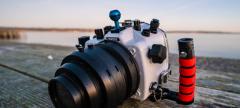DSLR and TG-5: A New Level of Underwater Photography
The first photographs were taken in the early 1800s and astounded the public. Soon thereafter, in 1856, a camera was lowered into the gloomy waters of the Bay of Dorsett and remotely activated. Underwater photography was born. The art and science of underwater photography quickly captured the hearts and minds of explorers. In 1899, the first portrait of a hard hat diver was taken and thereafter technology accelerated exponentially such that by 1950, Beauchat had successfully marketed a commercial housing for a commercial camera – the first on the market.
Not surprisingly, the legend himself – Jacques Cousteau – developed a self-contained underwater camera – the Calypso – in 1957. By 1963, the photographic giant Nikon had bought rights to the Calypso and marketed it as the Nikonos; the modern era of underwater photography had begun. The Nikonos line was rapidly improved until the Nikonos V appeared on the market. This is arguably still one of the best underwater cameras ever created. The age of digitalization and miniaturization quickly enveloped the underwater photography world until today, almost all underwater cameras are digital, from small point and shoots up to housed technological behemoths. It is from this background that modern underwater photography must be examined, not only from an artistic standpoint but also from a technical standpoint.
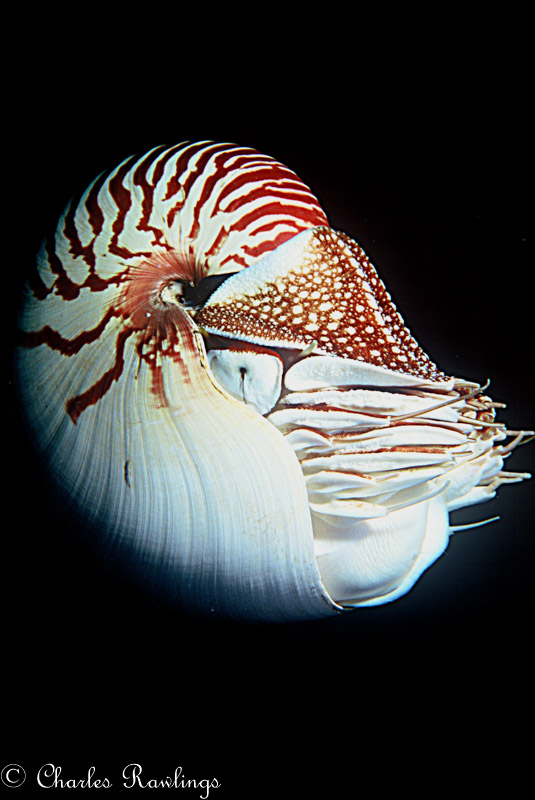
Hundreds of books and articles have been written about modern underwater photography. So…why another article? What more could possibly be said? My thoughts as well except there is a new perspective on macro photography brought to you by the recently introduced Olympus TG-5. At this point, a brief bit of personal background will help set the stage for my further opinions.
How I Got Started
I was certified to dive in the early 1980s and quickly ascended the ladder of certifications and specialties, as well as taking courses with underwater photographers such as Stan Watermann, Jim and Cathy Church, and Christopher Newbert. My father-in-law subsequently gifted me a Nikonos V with extension tubes, framers and a close-up kit. My love for extreme macro was born. For those who remember those Nikonos framers fondly, I clipped/removed one of the posts from the extension tube framers so that a strobe would not cast shadows upon small subjects and then perfected my stalking/buoyancy techniques so as to place the 1:1 framer around a skittish subject. I am still impressed with the results of the Nikonos V and its framers. I always shot with Velvia 50 film and could eke out 38 frames – about 6 to 7 subjects -- per roll.
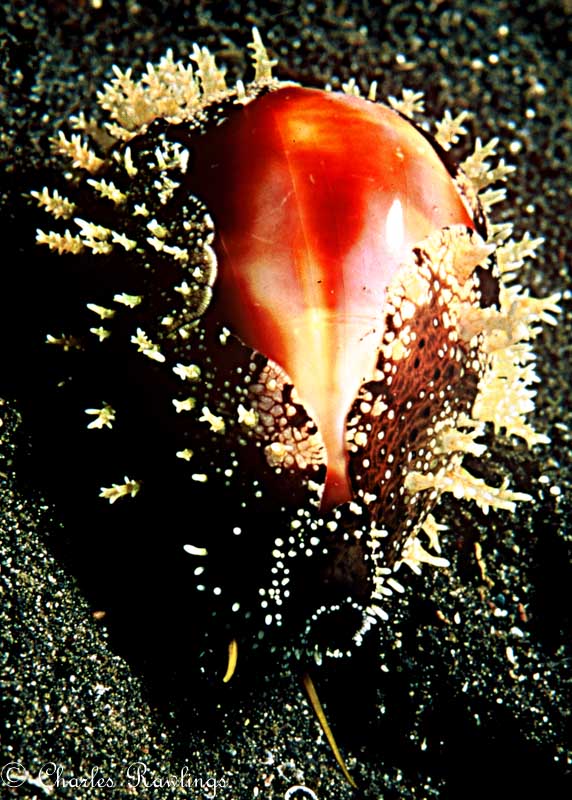
The photographers of today simply cannot relate to stumbling upon that once in a lifetime subject/shot with maybe, maybe one frame left on the film roll. Fast forward to the digital age where I could house my Nikon D-80 and shoot literally hundreds if not thousands of shots and subjects – on a single dive! It truly felt like you were cheating after the Velvia film era; then Photoshop/Light Box appeared and underwater photography literally became – unreal.
From early on in my photo history my primary subject was living mollusks – many of which had never been photographed alive in situ before. I eschewed almost all post photographic editing (and still do) so as to provide the most realistic depiction of the scarce-to-rare living mollusks that I photograph. I published two books – Living Shells and Living Mollusks – using both film and my trusty housed D-80. Then, I hit a plateau both artistically and intellectually. I wanted to photograph something rare and artistic; those ultra-macro shots of living mollusks and the almost microscopic mollusks that live in soft corals and Gorgonians. The Universe heard me and rewarded me in a very snarky manner.
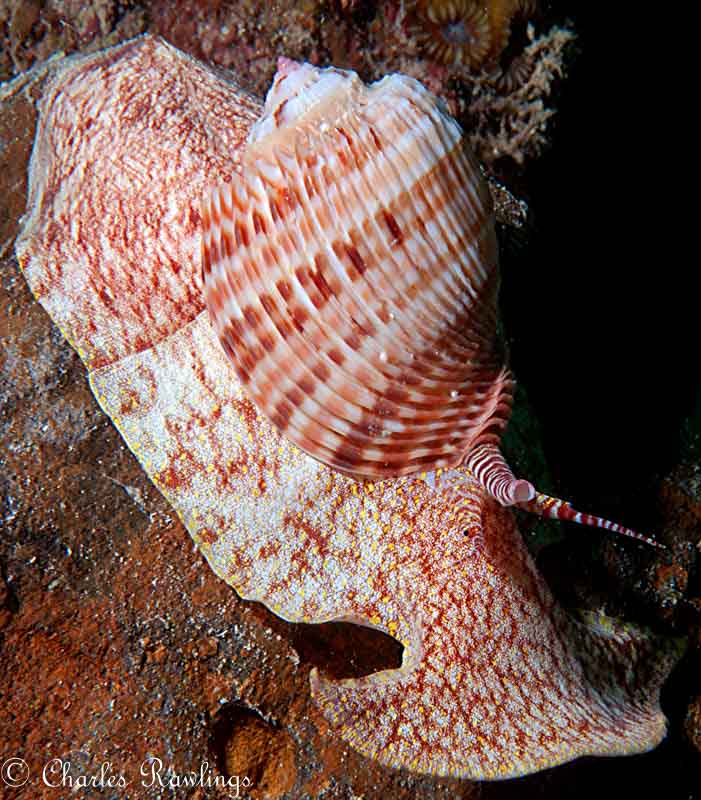 Harpa costata – first photograph of this rare harp alive in situ. Grand Bay, Mauritius.
Harpa costata – first photograph of this rare harp alive in situ. Grand Bay, Mauritius. A Problem Presents Itself
I travelled to Ambon to dive specifically with Nus and Ali; and specifically to photograph the Psychedelic Frogfish and the Tiger Egg Cowrie (Cuspivolva tigris), one of my holy grails for over 20 years. Now, imagine this, Ali and I found not one but two Psychedelic Frogfish – we had them together in an amazingly cool composition. I had my trusty D-80 with my dual strobes – they were in focus - I held my breath (BTW, don’t ever do that) and released the shutter. I heard a click and the shutter stayed open! I tried everything but my D-80 was dead! I screamed, I cursed, I ranted, but no one can hear you underwater!
Turns out that the gear teeth on my D-80 had been ground to nothing over my years of use. Fear not, said Nus and Ali! At that point, they handed me this ridiculously small, weird little camera with no strobes. They handed me the new Olympus TG-5 and my micro/macro living mollusk photography began; of course, the Universe was laughing in the background – let’s see how you do with a new, small camera and only your artistic ability! I just didn’t realize the impact that this weird little camera would have on my photography.
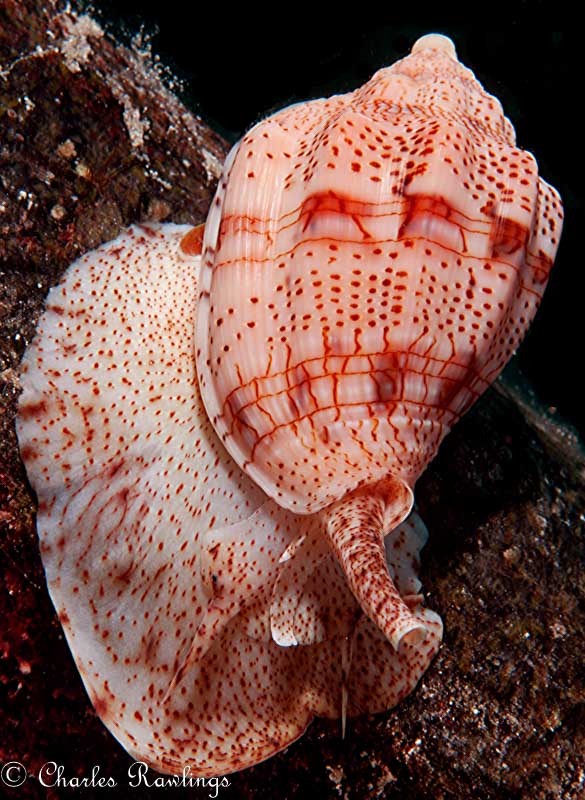
My Nikon D-80 Rig
I loved my housed Nikon; my housed Nikon D-80 with my dual strobes. It was like my right arm – I never, ever dove without it. It did, however, have several drawbacks; specifically, the bulkiness of the rig and the two lenses that I typically used – the 60 mm macro and 105 mm macro – were limited with regard to extreme close-ups and distance from the subject. The TG-5 solved both of these problems. Don’t misunderstand my comments; my housed Nikon with either lens was superb. It was amazing when the subject was a typical living mollusk or cephalopod crawling along the coral reef or muck bottom. Also, I am particularly fond of a black background, and with this camera and strobes I could almost always achieve a black background, while avoiding any backscatter.
However, what had become more and more apparent to me was that my set-up had serious disadvantages when it came to ultra-macro shooting or small subjects in tight places. My portfolio lacked shots of the small mollusks such as ovulids, Simnias, and even certain small nudibranchs. Sure, I could photograph them and then crop them down, but such cropping degraded the sharpness of the images and the pixellation became prohibitive.
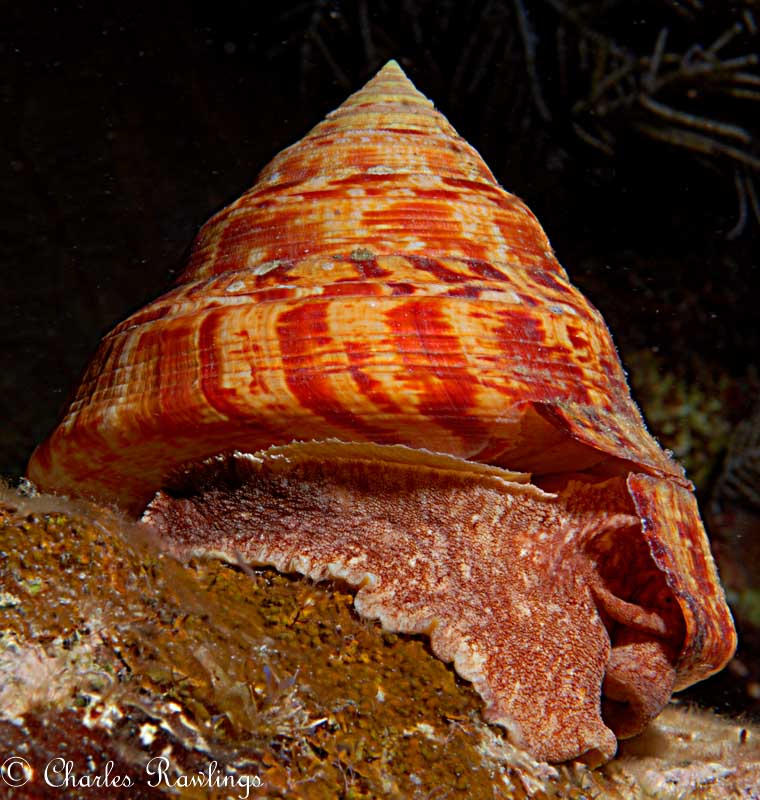
Trying out the Compact TG-5
Thus, back to the Olympus. When my Nikon died in Ambon, I had a choice – learn a new method with new equipment or take no photographs. I looked at that weird, point and shoot, Olympus in my hand – no strobes and only a small video light – and cursed the Universe. Well, not really...it was a cool challenge. This small camera was an enigma to me; and its handling and use went against almost every technique I had learned. Where was my controlled lighting? My strobes? My f/22 for depth of field? Where was my giant camera rig that was handed to me ever so carefully after I entered the water? I felt like Will Smith in Men in Black being handed the small needle point gun – here is your weapon, use it wisely. I had my doubts. Nus and Ali only laughed and assured me that I could handle it.
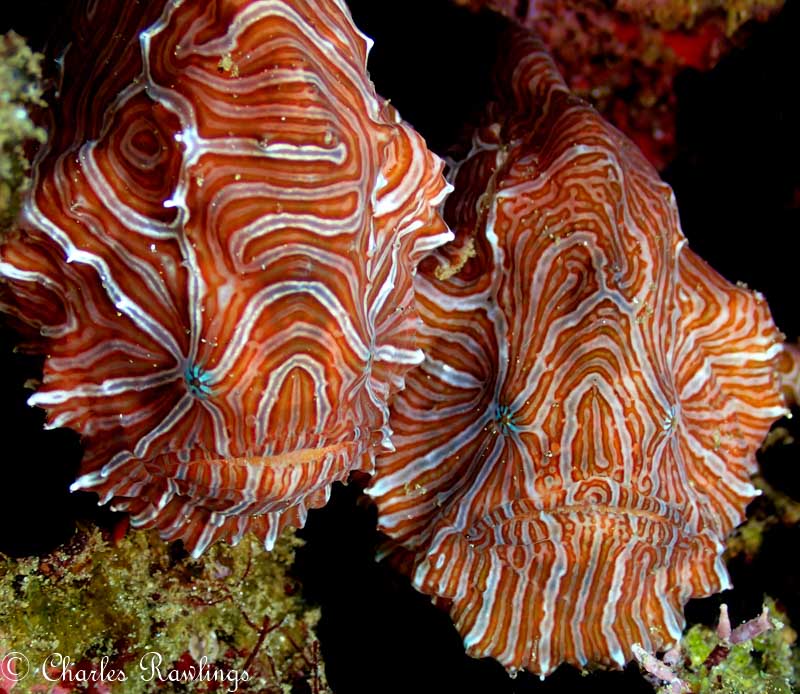
I figured I would just go for broke since I was a macro photographer and set the camera controls for microscope. Supposedly the SOLA video light provided adequate lighting. Again, I had my doubts. To say that I was amazed following several test subjects was an understatement. I was blown away by the micro close-ups this camera produced. I was not only able to maneuver through dense soft coral bushes to photograph soft coral ovulids; I was also able to photograph their faces! These ovulids are basically the size of a pea and no one had ever seen their faces before. Some of the Simnias are the size of a grain of rice and again, sharp images of their faces are possible with this Olympus. Moreover, I could maneuver through, between and around the soft coral bushes and gorgonions upon which they live, without disturbing the polyps.

The compactness of the camera and small light source could be maneuvered into position so my subject was surrounded by open, undisturbed polyps. The artistic possibilities did not escape me. This lack of stealth and compactness was a major drawback with my big housed set-up. I always touched the soft coral, with the polyps retracting immediately. The TG-5 solved that problem. I was also amazed at the lighting. I used the SOLA video light that was more than adequate for lighting. I would actually use it at only half to three quarters power and then turn it off to conserve battery. It also worked well at night although I typically kept it on its red light mode to decrease the gathering of the worms which muck up the background. So, compactness, microscopic photographs and excellent lighting, I was a convert; of course, there are a few drawbacks to the Olympus.
Drawbacks
First and foremost, on microscope mode, the settings are pre-selected by the camera. In other words, unlike my D-80, which I set on manual and select the f-stop and speed, the Olympus does not allow you to select either. In microscope mode, you have few options to select your own settings. As a result you rely on the camera for your depth of field (extremely shallow) and speed, which occasionally results in some blurring. In addition, using a video light such as the SOLA instead of strobes reduces your options as a photographer to manipulate your lighting. With my D-80 and strobes I can use dual strobes, one strobe, side lighting, back lighting, top lighting, etc. so as to vary the lighting; not to mention that I can consistently create a black background and increased depth of field using f/22. The Olympus with continuous video lighting limits those possibilities.
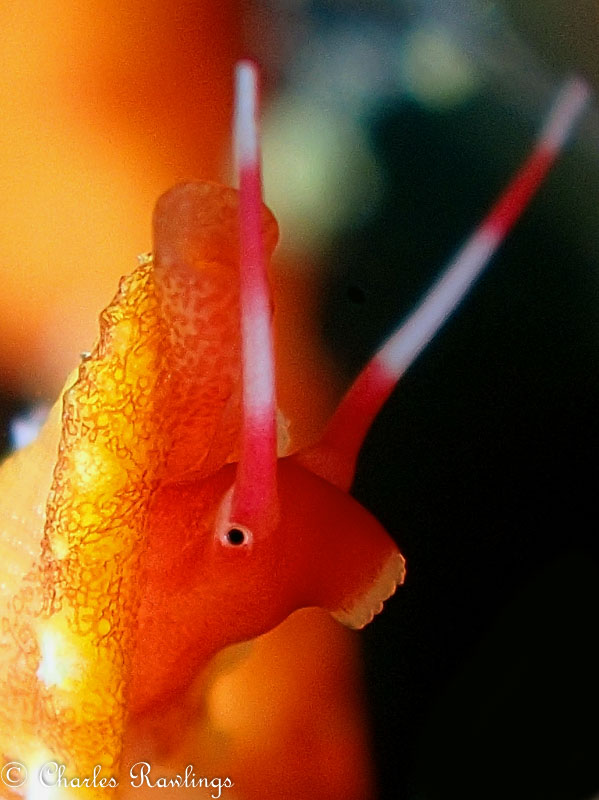
Of course, you can attach strobes but then you increase the size of the rig; and lighting your subject, which is a centimeter from the lens, is difficult. I typically position the light tucked alongside the camera about an inch from the subject. With the handle I can aim, compose and shoot with one hand and not disturb the creatures’ environment. I can’t do that with strobes or my D-80 rig. Finally, with the higher ISO and open aperture in microscope mode, the potential for a pixelated photo still exists. In other words, I have heard from other photographers that they were unable to enlarge their prints past about 8x10 due to the noise/graininess. I, personally, have never had that problem. Some of my photos have been enlarged to at least 16x20 and framed for display. I mention this only as a consideration.
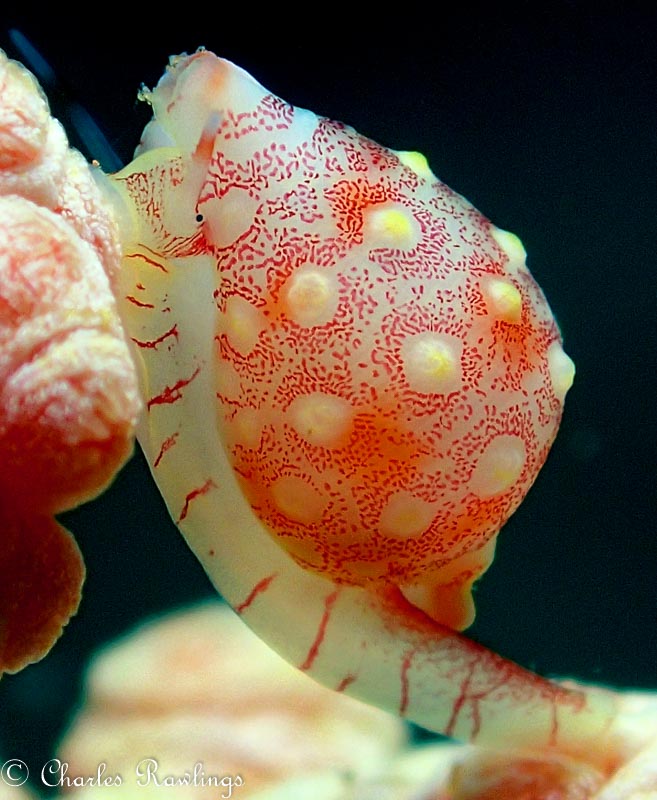
Macro photography has indeed evolved from the Nikonos V with its extension tubes, close-up kit and Velvia 50 film. I must say, however, that as a macro photographer, being able to stealthily approach a subject, place a 1:1 extension tube around it, and obtain a good photo was highly rewarding. My housed D-80 with strobes, however, was incredible; it allowed me to take hundreds of photos with amazing resolution and lighting options. As mentioned, I had difficulty with small subjects in very tight or environmentally sensitive places. Then, voilà, the Olympus TG-5 appears and solves both those problems. In microscopic mode with a small SOLA video light, it does what my D-80 can’t – take microscopic photos of small subjects in close quarters. The accompanying photos speak for themselves.
Editor's note: As Charles lays out so nicely in this article, the TG-5 excels when it comes to getting in really close to very small subjects that could be hidden in corals or substrate, without disturbing subjects or coral. And it's amazing for taking close-up photos of said extremely small subjects, as can be seen in his photos. It is also an excellent beginner's all-around underwater camera. With that said, I also need to mention that a higher-end compact setup, like the RX100 V, has major advantages over the TG-5 in terms of sensor size, image quality, auto-focus and full manual control. When it comes to a mirrorless rig, the differences are even larger. So keep this in mind: the TG-5 is a great beginner's camera which punches above its weight on macro/super-macro, can get into tight spaces that no other rig can, and is a fantastic companion to a larger higher-end rig, but it will not provide the same performance or image quality as higher end compact cameras, mirrorless rigs, or DSLRs. Check out our TG-5 review for more info about this great camera! – Bryan Chu, Associate Editor.
Gear Links
- Olympus Tough TG-5 Camera
- Olympus PT-058 Underwater Housing
- Olympus TG-5 Camera and Housing Bundle
- Sola 1200 Video Light
Additional Reading
RECOMMENDED ARTICLES
SUPPORT THE UNDERWATER PHOTOGRAPHY GUIDE:
The Best Service & Prices on u/w Photo Gear
 Visit Bluewater Photo & Video for all your underwater photography and video gear. Click, or call the team at (310) 633-5052 for expert advice!
Visit Bluewater Photo & Video for all your underwater photography and video gear. Click, or call the team at (310) 633-5052 for expert advice!
The Best Pricing, Service & Expert Advice to Book your Dive Trips
 Bluewater Travel is your full-service scuba travel agency. Let our expert advisers plan and book your next dive vacation. Run by divers, for divers.
Bluewater Travel is your full-service scuba travel agency. Let our expert advisers plan and book your next dive vacation. Run by divers, for divers.



























